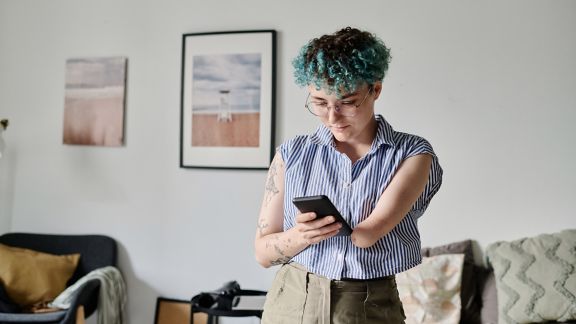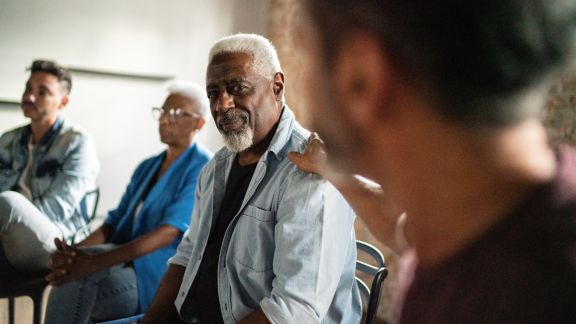Positive Approaches & Supportive Environments Key to Reducing LGBTQIA2S+ Youth Suicide

This article is from our NORC Now newsletter. Subscribe today.
March 2024
Emphasizing the strengths of being part of Lesbian, Gay, Bisexual, Transgender, Queer, Intersex, Asexual, and Two-Spirit (LGBTQIA2S+) communities and providing supportive environments for youth are key to suicide prevention in this population.
This is according to a resource guide produced by NORC at the University of Chicago for the Suicide Prevention Resource Center (SPRC).
Discrimination Elevates Suicide Risk
Discrimination in school, at work, or in everyday life; bullying in person or online; housing insecurity often associated with family rejection; and politicization of their rights all contribute to stress for LGBTQIA2S+ youth, the guide notes. These stressors may be magnified among those who are Black, American Indian or Alaska Native, or other people of color.
A 2023 national survey of nearly 34,000 LGBTQIA2S+ youth by the Trevor Project, an advocacy group dedicated to preventing suicide among LGBTQIA2S+ young people, found that 41 percent of the surveyed individuals had considered suicide, and 14 percent had attempted it. More than half reported lacking access to needed mental health care. However, the survey also found that support or affirmation at school or home reduced suicide risk for these young people.
No “One Size Fits All” Approach
With funding from the Substance Abuse and Mental Health Services Administration, NORC and SPRC set out to develop resources to help individuals and organizations better support the mental well-being of LGBTQIA2S+ youth.
NORC drew on its expertise in both suicide prevention and working with LGBTQIA2S+ communities to first identify gaps in available resources. Then, NORC staff conducted focus groups with LGBTQIA2S+ youth and their parents and interviewed advocates and professionals who work with LGBTQIA2S+ youth.
“The youth we spoke with told us we should focus on the positives and strengths of being a member of these communities,” said Brett Harris, a senior research scientist in the Public Health department at NORC. “They also emphasized the need for safe, supportive environments.”
The focus groups included individuals from different segments of LGBTQIA2S+ communities living in areas with different levels of acceptance. Those groups highlighted the need for tailored approaches based on individual needs.
“It can’t be a one-size-fits-all approach,” Harris said.
Focus on Positive Messages
The resource guide lays out actionable steps for professionals and organizations working with LGBTQIA2S+ youth. These include focusing on hopeful, positive messages; celebrating the diversity and complexity of their identities; and involving LGBTQIA2S+ youth in developing programs and services. NORC also produced four focus guides for families and communities, health and mental health professionals, school professionals, and state agencies.
“The guide focuses on simple, low-cost actions that parents, families, communities, teachers, and other professionals can take," Harris said. "Everyone has a role to play.”
This article is from our flagship newsletter, NORC Now. NORC Now keeps you informed of the full breadth of NORC’s work, the questions we help our clients answer, and the issues we help them address.





